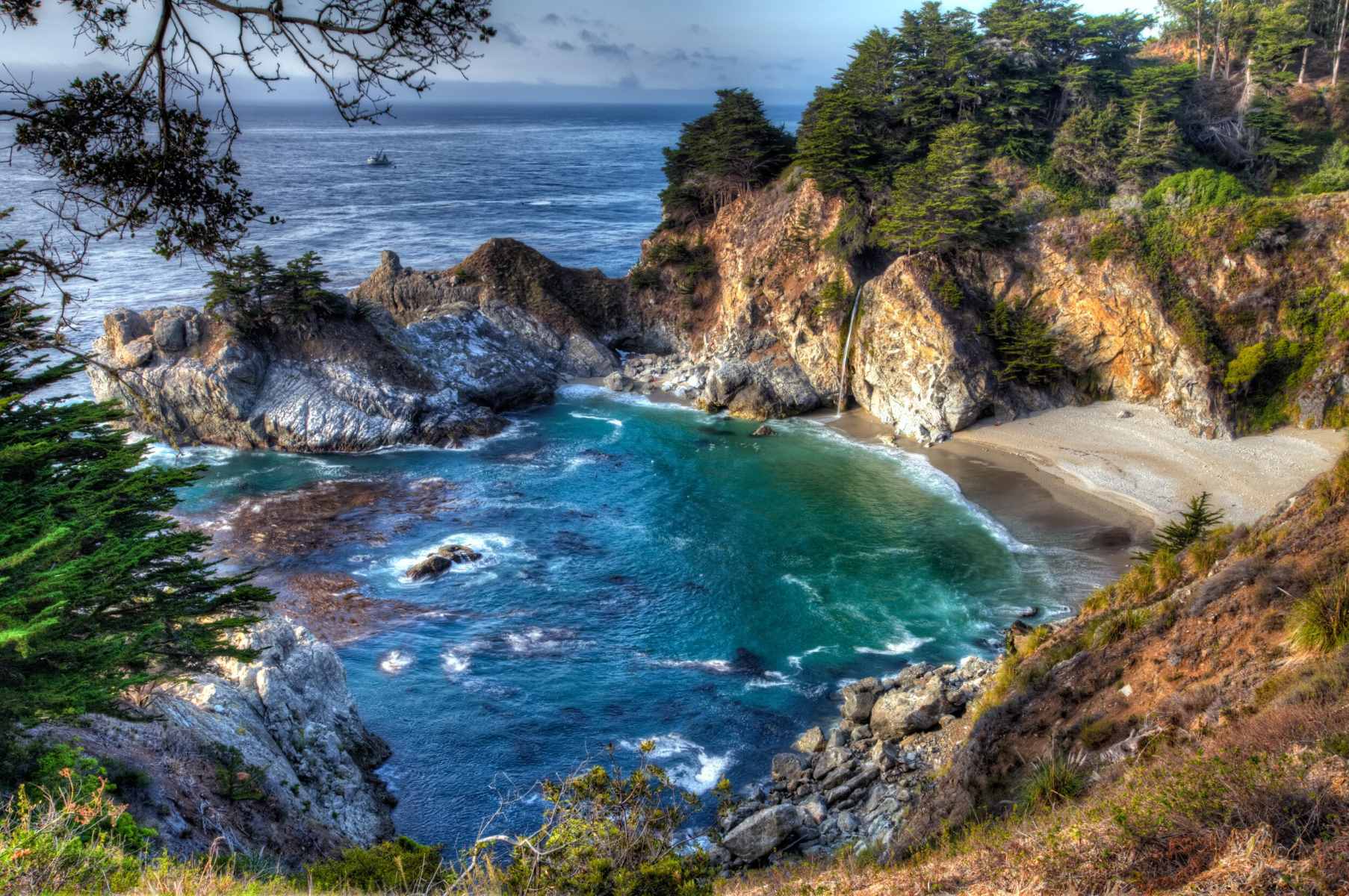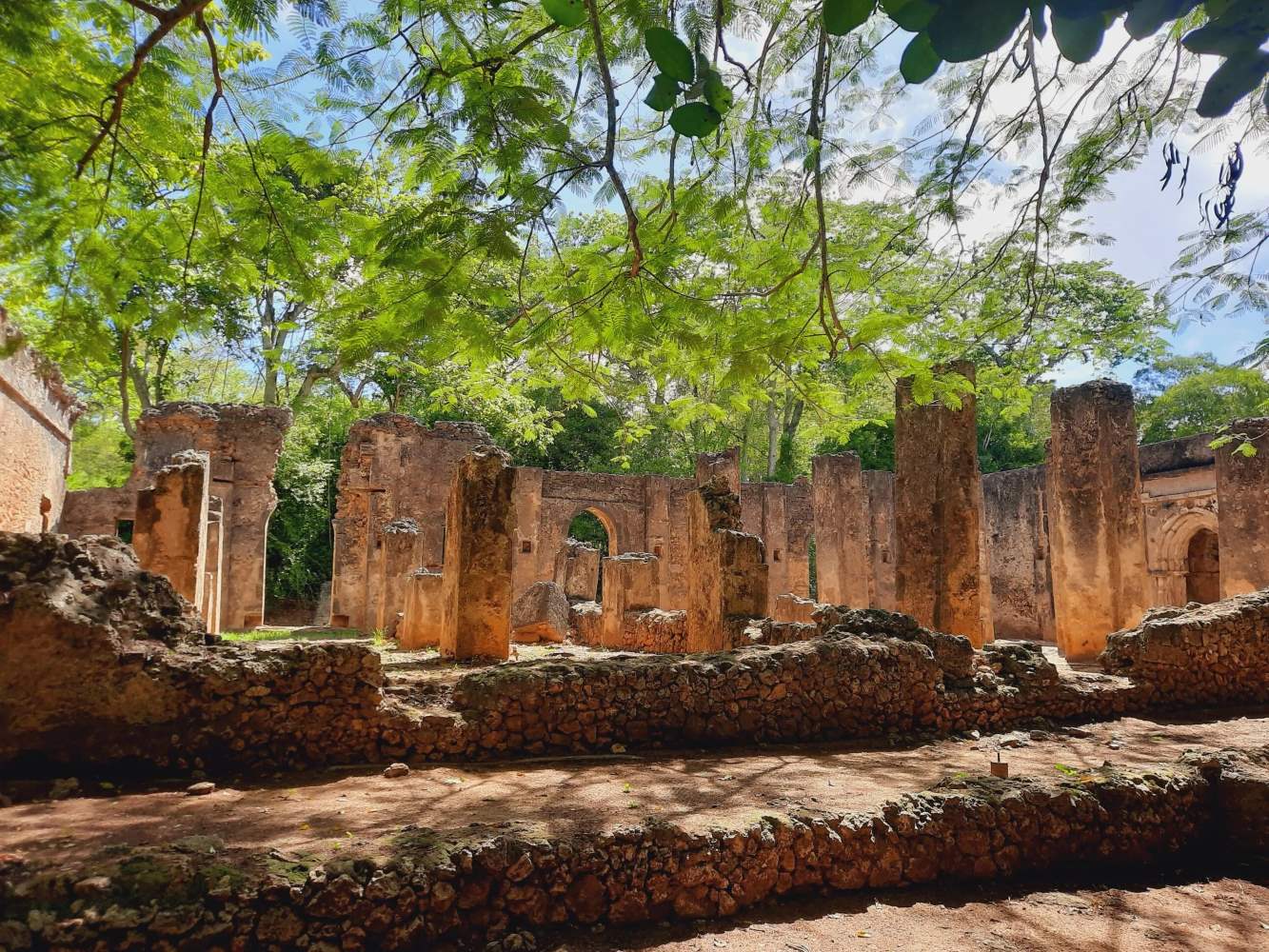
McWay Falls is a stunning 80-foot waterfall located in Julia Pfeiffer Burns State Park along California's Big Sur coast. This natural wonder captivates visitors with its unique beauty, as it cascades directly into the Pacific Ocean or onto the sandy beach, depending on the tide. Accessible via a short trail, McWay Falls offers breathtaking views and photo opportunities. Named after Christopher McWay, an early settler in the area, the falls are a testament to nature's power and beauty. Whether you're a nature enthusiast, photographer, or just someone seeking a peaceful escape, McWay Falls is a must-see destination.
McWay Falls: A Natural Wonder
McWay Falls, located in Julia Pfeiffer Burns State Park in California, is a stunning waterfall that captivates visitors from around the world. This natural wonder has a rich history and unique features that make it a must-see destination.
- McWay Falls is an 80-foot waterfall that flows year-round.
- The waterfall is one of only two in California that empties directly into the ocean.
- McWay Falls is named after Christopher McWay, an early settler in the area.
- The waterfall is part of the Big Sur coastline, known for its rugged beauty.
- Julia Pfeiffer Burns State Park, where McWay Falls is located, was established in 1962.
The Unique Features of McWay Falls
McWay Falls stands out due to its unique characteristics. From its location to its formation, each aspect adds to its allure.
- The waterfall is fed by McWay Creek, which originates in the Santa Lucia Mountains.
- During high tide, the waterfall flows directly into the Pacific Ocean.
- At low tide, the waterfall creates a small cove on the beach.
- The beach below McWay Falls is inaccessible to the public to preserve its natural state.
- The waterfall is best viewed from the Overlook Trail in Julia Pfeiffer Burns State Park.
The History Behind McWay Falls
The history of McWay Falls is as fascinating as its natural beauty. It has been shaped by both natural forces and human influence.
- The land around McWay Falls was once owned by Lathrop and Helen Hooper Brown.
- Helen Hooper Brown donated the land to the state of California in 1961.
- The Browns built a house called "Waterfall House" near the falls, which was destroyed in a landslide in 1983.
- The waterfall was originally a tidefall, but a landslide in 1983 altered its course.
- The area around McWay Falls has been inhabited by Native American tribes for thousands of years.
Flora and Fauna Around McWay Falls
The area surrounding McWay Falls is rich in biodiversity. The unique ecosystem supports a variety of plant and animal species.
- The coastal scrub and chaparral vegetation dominate the landscape around McWay Falls.
- Rare plants like the Santa Lucia fir can be found in the park.
- Wildlife in the area includes black-tailed deer, bobcats, and gray foxes.
- The waters near McWay Falls are home to sea otters and harbor seals.
- Migratory birds, such as the western gull, can often be seen near the waterfall.
Visiting McWay Falls
Planning a visit to McWay Falls can be an unforgettable experience. Here are some tips and facts to help you make the most of your trip.
- The best time to visit McWay Falls is during the spring and fall when the weather is mild.
- The Overlook Trail is an easy, half-mile hike that offers stunning views of the waterfall.
- Parking at Julia Pfeiffer Burns State Park can be limited, especially during peak seasons.
- There are no facilities or services at the Overlook Trail, so visitors should come prepared.
McWay Falls remains a breathtaking destination that offers a glimpse into the natural beauty of California's coastline.
The Magic of McWay Falls
McWay Falls isn’t just another waterfall. It’s a rare coastal gem that drops directly into the Pacific Ocean, making it one of only two in California. Located in Julia Pfeiffer Burns State Park, this 80-foot beauty offers stunning views, especially at sunset. The falls are fed by McWay Creek and are best seen from the Overlook Trail. Remember, swimming isn’t allowed due to dangerous currents, but the view alone is worth the trip. The area around the falls is rich in history, once home to the Saddle Rock Ranch. Today, it’s a protected site, ensuring its beauty remains untouched. Whether you’re a nature lover, photographer, or just someone looking for a peaceful escape, McWay Falls offers a unique experience. So, pack your camera, wear comfortable shoes, and get ready to be amazed by one of California’s most breathtaking natural wonders.
Was this page helpful?
Our commitment to delivering trustworthy and engaging content is at the heart of what we do. Each fact on our site is contributed by real users like you, bringing a wealth of diverse insights and information. To ensure the highest standards of accuracy and reliability, our dedicated editors meticulously review each submission. This process guarantees that the facts we share are not only fascinating but also credible. Trust in our commitment to quality and authenticity as you explore and learn with us.


